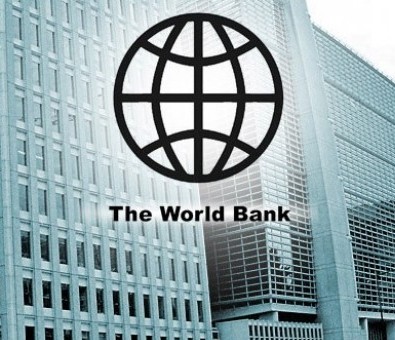Indian economy to grow by 6.4% in 2015-16: World Bank
 Washington: Indian economy, which accounts for 80 percent of South Asia's output, is set to grow by 6.4 percent in 2015-16 as against 5.6 percent in 2014-15, the World Bank has said.
Washington: Indian economy, which accounts for 80 percent of South Asia's output, is set to grow by 6.4 percent in 2015-16 as against 5.6 percent in 2014-15, the World Bank has said.
With economic activity buoyed by expectations from the new elected government of Prime Minister Narendra Modi, "India is benefiting from a "Modi dividend"," the Bank said in its twice-a-year South Asia Economic Focus report.
Over the next year or so economic growth should be supported by the recovering US economy that would provide a market for Indian merchandise and service exports, it said.
"The outlook over the next years for South Asia indicates broad economic stability and a pick-up in growth with potential risks concentrated on the fiscal and structural reform side," said Martin Rama, Chief Economist for South Asia at the World Bank.
"Future growth will increasingly depend on strong investment and export performance," he added.
Private investment is expected to pick up thanks to the government's business orientation, and declining oil prices should boost private sector competitiveness.
But economic reforms will be needed for India to achieve its full long-term growth potential, the report argued.
The report said the region's economy will expand by a real 6 percent in 2015 and by 6.4 percent in 2016 compared to 5.4 percent this year, potentially making it the second fastest growing region in the world after East Asia and the Pacific.
Other countries in the region are Afghanistan, Bangladesh, Bhutan, Maldives, Nepal, Pakistan and Sri Lanka.
The Bank said India's long-term growth potential remains high due to favourable demographics, relatively high savings, and policies and efforts to improve skills and education, facilitate domestic market integration and incentivize manufacturing activities.
In the medium term, with the economy still below potential and reforms on a gradualist path, growth is expected to accelerate from 5.6 percent in 2015 to 6.4 percent and 7 percent in 2016 and 2017. Inflation is expected to decline with monetary policy switching to inflation targeting while the current account deficit is expected to widen somewhat as import demand and capital inflows rise.
Fiscal consolidation is expected to continue with stronger revenue mobilisation, while the oil subsidy burden could decline to 0.6 percent of GDP if benign global crude prices persist, it said.
Supply chain delays and uncertainty are a major yet under-appreciated constraint to manufacturing growth and competitiveness in India, it said.--PTI